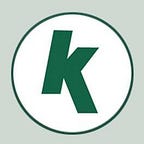Dimensional Weight Pricing Now Impacting Less than Truckload
This week’s blog post was written by Jack Ampuja, president of Supply Chain Optimizers — a specialized consultancy that helps companies control supply chain costs through packaging optimization.
While dimensional weight pricing has been applied in domestic ground parcel since 2013, recently it has also migrated into the less than truckload sector; because dim weight pricing is based on shipment density, this makes efficient packaging more important than ever. In fact, effective packaging can actually drive freight costs down.
Freight classes as defined by National Motor Freight Classification (NMFC) hearken back to 1935 when the Motor Carrier Act became law. The factors considered in assigning an NMFC freight class to a specific product are:
- Product value & susceptibility to damage
- Product handling characteristics; hard to handle items such as a mattress will get a higher rate
- Product stowability characteristics: how easily the item can be loaded into a truck and how well it fits with other products; a step ladder being lengthy with open gaps will get a higher rate
The logic gap that always existed in the NMFC freight classification system is that it is based on the product itself, rather than how the product is packaged; so when a high-density product such as a hardcover book was shipped in an excessively large box, the shipper still got the benefit of the lower freight class, while the carrier endured the brunt of inefficient packaging.
When viewed in this light, one has to conclude that this is inherently unfair: the shipper who caused the problem suffers no adverse consequence, while the carrier who has no control over the packaging bears the negative impact. While the NMFC had a stated density for each freight class, it was impractical for carriers to measure it — plus, confronting customers about the issue was bad for the carrier’s business…so everyone just ignored the problem.
eCommerce Triggers Shift to Dimensional Weight Pricing
eCommerce has caused radical change, leading all parcel and LTL carriers to recognize the impact of density on shipping efficiency.
What many have not realized is that the application of dimensional weight has shifted responsibility and the cost of inefficient packaging from the carrier to the shipper because transportation cost is now based and invoiced on the freight class of the entire box and not just the product itself.
While no announcement was made about this change in responsibility, in my opinion this is one of the biggest changes that has ever impacted NMFC freight classes. How many shippers do you suppose added packaging engineers to their internal staff to deal with this added responsibility?
I visit a lot of companies in my travels and have yet to encounter any business which has beefed up its internal packaging capability in response to this responsibility shift. In fact, large corporations that once had significant staffing to work on packaging have, in recent years, cut back on packaging engineers in cost reduction efforts.
LTL Carriers Now Embracing Dim Weight Pricing
One of the major drivers of dimensional weight pricing was the development of dimensioners — measuring equipment that can simultaneously calculate the weight, size and density of a shipping case, or even an entire pallet of freight. Dimensioners gave carriers an easy to use tool to measure density. Like parcel carriers, LTL truckers are quickly moving to dim weight application. One company told our consulting firm that all of their LTL shipments are now getting dim weight pricing.
Most LTL carriers have invested in pallet dimensioners. Even if the carrier is not yet applying dim weight pricing, the equipment is being used to evaluate pricing accuracy and identify inefficient shippers. Either path will result in higher rates for companies that ship excess void.
LTL shippers actually get a double hit on dim weight because pricing is based on both their ability to get good cube utilization on individual cases PLUS their ability to stack those boxes efficiently on a pallet. Loading voids and pallet overhang/underhang all now work to the carrier’s advantage in pricing.
3PLs Can Help Optimize Packaging and Trailer Loading to Control Freight Costs
So, we are back to logistics basics. While the ability to increase the density of a specific product is limited if not impossible, efficient packaging and pallet stacking should be in scope for every shipper. As a result, working with a capable 3PL is more important than ever as they can identify products that need improved packaging AND stack outbound pallets more effectively. Shippers that can package products and stack pallets better will see their efforts rewarded through lower freight costs.
